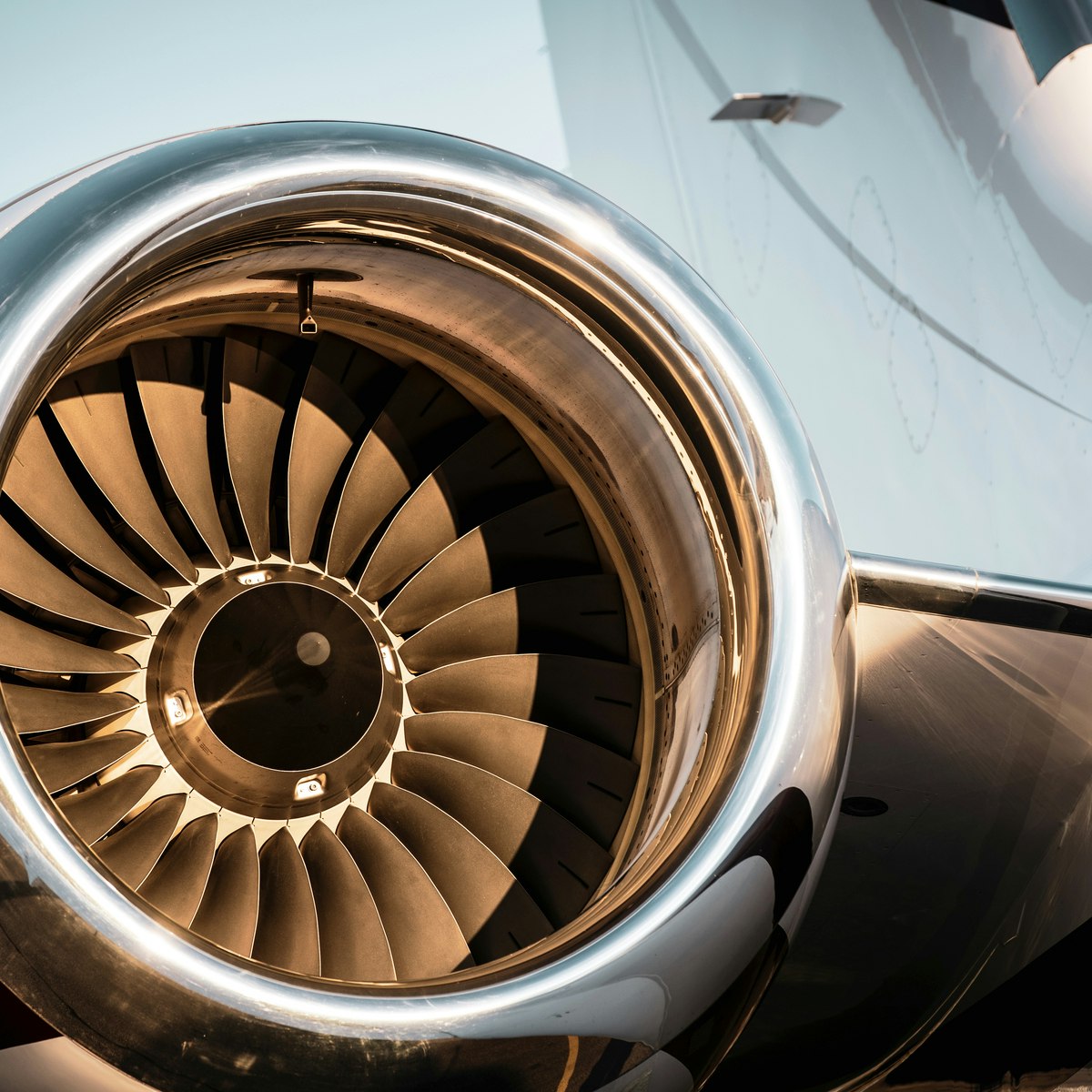
The instructors of the online course "Digitalisation in Aeronautics" present a spectrum of different aviation research and application areas, exploring the impact of digitalisation in this specific field, including the effects of digitalisation in simulating the interaction of aircraft components, in overall aircraft development and related decision-making and in the communication channels used within aircraft. A broad and varied range of applications and digital solutions are explored in detail in the individual modules of this course.
What's inside
Syllabus
Digital Strategy of Bavaria
Bavarian State Minister of Digital Affairs Judith Gerlach provides a brief introduction to the digital strategy of the state of Bavaria, describing the importance of digitalisation in global manufacturing and research and the aerospace industry in particular. She demonstrates compellingly how an effective strategy can be devised for staying on top of the developments in this complex field of research.
Read more
Syllabus
Good to know
Save this course
Reviews summary
Top-rated aeronautics course
Activities
Seek guidance from experts in the field of digitalisation in aeronautics
Show steps
Connecting with experts will provide you with valuable insights and support. Reach out to professionals in industry or academia who can share their knowledge and experience.
Show steps
-
Identify potential mentors through networking events or online platforms
-
Reach out to them and express your interest in their mentorship
-
Arrange regular meetings or communication to discuss your progress and seek guidance
Refresh Linear Algebra basics
Show steps
Start by brushing up on the concepts of matrices, vectors, and matrix operations. Review simple linear transformations and the geometry of linear spaces. It will strengthen your mathematical foundation for this course.
Browse courses on
Linear Algebra
Show steps
-
Review notes on vector spaces and matrix theory
-
Work through practice problems on linear transformations
-
Solve equations involving matrices and vectors
Follow tutorials on differential geometry
Show steps
Enhance your understanding of the mathematical concepts underlying this course with tutorials on curves, surfaces, and differential forms. Hands-on examples will solidify your knowledge and boost your confidence in applying these concepts.
Browse courses on
Differential Geometry
Show steps
-
Find online tutorials or video lectures on differential geometry
-
Follow along with the tutorials, taking notes and practicing examples
-
Apply the concepts to solve problems and gain a deeper understanding
Four other activities
Expand to see all activities and additional details
Show all seven activities
Solve practice problems on aircraft design
Show steps
Applying your theoretical knowledge to practical problems will reinforce your grasp of the design process. Practice solving problems involving aircraft geometry, weight estimation, and structural analysis.
Browse courses on
Aircraft Design
Show steps
-
Find practice problems online or in textbooks
-
Solve the problems step-by-step, showing your work and calculations
-
Review your solutions and identify areas where you need further practice
Join study groups to discuss course topics
Show steps
Collaborating with peers will enhance your learning and provide a supportive environment. Engage in discussions, share insights, and work together to tackle challenging concepts.
Show steps
-
Connect with classmates online or in person
-
Organize regular study sessions and discuss course topics
-
Share notes, ideas, and resources with each other
Create a presentation on a specific aspect of digitalisation in aeronautics
Show steps
By creating a presentation, you will synthesize and organize your knowledge on a specific topic. It will not only deepen your understanding but also help you develop your communication skills.
Show steps
-
Choose a specific area of digitalisation in aeronautics to focus on
-
Research the topic thoroughly and gather relevant information
-
Develop a presentation outline and organize your content logically
-
Design visually appealing slides and prepare clear and concise explanations
-
Practice your presentation and seek feedback from peers or instructors
Contribute to open-source projects in the field of digitalisation in aeronautics
Show steps
By participating in open-source projects, you will gain hands-on experience in solving real-world problems and contribute to the advancement of the field.
Show steps
-
Identify open-source projects related to digitalisation in aeronautics
-
Review the project documentation and familiarize yourself with the codebase
-
Find an issue or feature that you can contribute to and start working on it
-
Submit your changes for review and feedback
-
Collaborate with other contributors to refine and improve your work
Seek guidance from experts in the field of digitalisation in aeronautics
Show steps
Connecting with experts will provide you with valuable insights and support. Reach out to professionals in industry or academia who can share their knowledge and experience.
Show steps
- Identify potential mentors through networking events or online platforms
- Reach out to them and express your interest in their mentorship
- Arrange regular meetings or communication to discuss your progress and seek guidance
Refresh Linear Algebra basics
Show steps
Start by brushing up on the concepts of matrices, vectors, and matrix operations. Review simple linear transformations and the geometry of linear spaces. It will strengthen your mathematical foundation for this course.
Browse courses on
Linear Algebra
Show steps
- Review notes on vector spaces and matrix theory
- Work through practice problems on linear transformations
- Solve equations involving matrices and vectors
Follow tutorials on differential geometry
Show steps
Enhance your understanding of the mathematical concepts underlying this course with tutorials on curves, surfaces, and differential forms. Hands-on examples will solidify your knowledge and boost your confidence in applying these concepts.
Browse courses on
Differential Geometry
Show steps
- Find online tutorials or video lectures on differential geometry
- Follow along with the tutorials, taking notes and practicing examples
- Apply the concepts to solve problems and gain a deeper understanding
Solve practice problems on aircraft design
Show steps
Applying your theoretical knowledge to practical problems will reinforce your grasp of the design process. Practice solving problems involving aircraft geometry, weight estimation, and structural analysis.
Browse courses on
Aircraft Design
Show steps
- Find practice problems online or in textbooks
- Solve the problems step-by-step, showing your work and calculations
- Review your solutions and identify areas where you need further practice
Join study groups to discuss course topics
Show steps
Collaborating with peers will enhance your learning and provide a supportive environment. Engage in discussions, share insights, and work together to tackle challenging concepts.
Show steps
- Connect with classmates online or in person
- Organize regular study sessions and discuss course topics
- Share notes, ideas, and resources with each other
Create a presentation on a specific aspect of digitalisation in aeronautics
Show steps
By creating a presentation, you will synthesize and organize your knowledge on a specific topic. It will not only deepen your understanding but also help you develop your communication skills.
Show steps
- Choose a specific area of digitalisation in aeronautics to focus on
- Research the topic thoroughly and gather relevant information
- Develop a presentation outline and organize your content logically
- Design visually appealing slides and prepare clear and concise explanations
- Practice your presentation and seek feedback from peers or instructors
Contribute to open-source projects in the field of digitalisation in aeronautics
Show steps
By participating in open-source projects, you will gain hands-on experience in solving real-world problems and contribute to the advancement of the field.
Show steps
- Identify open-source projects related to digitalisation in aeronautics
- Review the project documentation and familiarize yourself with the codebase
- Find an issue or feature that you can contribute to and start working on it
- Submit your changes for review and feedback
- Collaborate with other contributors to refine and improve your work
Career center
Aerospace Engineer
Avionics Engineer
Control Systems Engineer
Data Scientist
Digital Transformation Manager
Electrical Engineer
Flight Test Engineer
Industrial Engineer
Materials Engineer
Mechanical Engineer
Operations Research Analyst
Product Manager
Project Manager
Quality Assurance Engineer
Software Engineer
Reading list
Share
Similar courses
OpenCourser helps millions of learners each year. People visit us to learn workspace skills, ace their exams, and nurture their curiosity.
Our extensive catalog contains over 50,000 courses and twice as many books. Browse by search, by topic, or even by career interests. We'll match you to the right resources quickly.
Find this site helpful? Tell a friend about us.
We're supported by our community of learners. When you purchase or subscribe to courses and programs or purchase books, we may earn a commission from our partners.
Your purchases help us maintain our catalog and keep our servers humming without ads.
Thank you for supporting OpenCourser.



